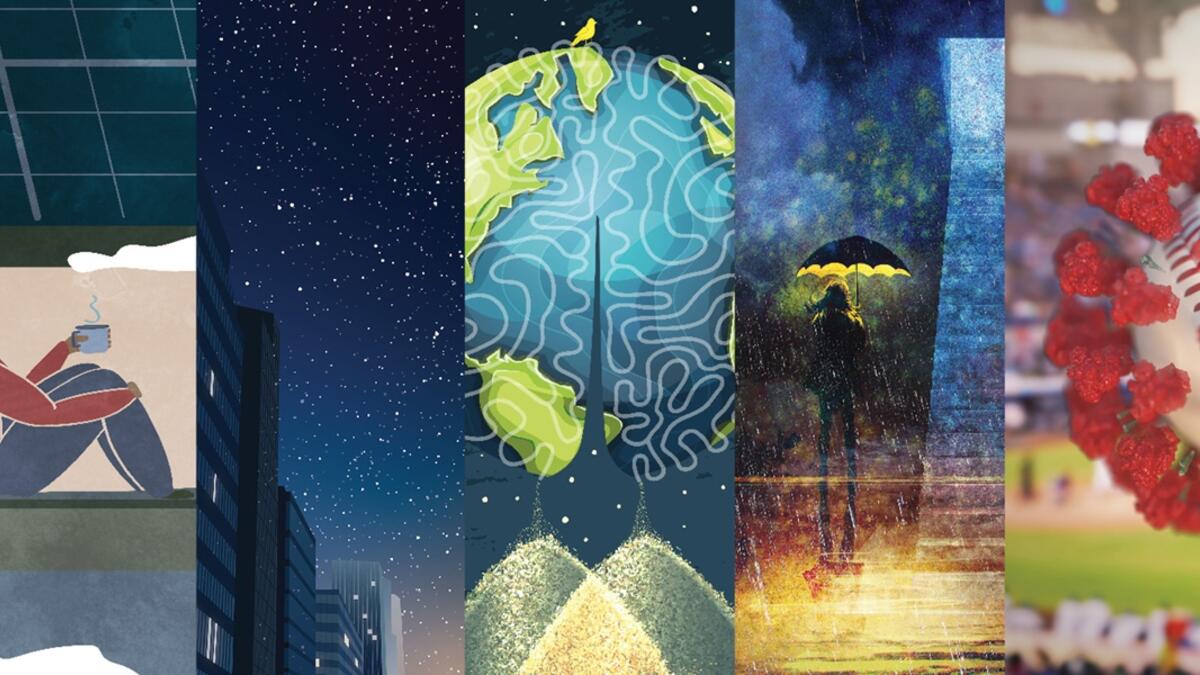Writers from around the world envision the future, earn spot in new magazine

In April, Arizona State University’s Narrative Storytelling Initiative invited people worldwide to write a short story on what they think the future holds, based on our current world. No science fiction, no fantasy, but an imagined future reality.
The results are in, and they’re illuminating. Enjoy the top five in a new magazine displayed on Issuu: Envisioning the Future, Volume 1.
The initiative received 43 submissions from around the world — with 20 from the ASU community — for its story contest in partnership with the Julie Ann Wrigley Global Futures Laboratory. Adaptation to a changed reality was one of the recurring themes among most of the stories, which ranged from 400 to 700 words, said Steven Beschloss, director of the Narrative Storytelling Initiative.
“One of the inspiring aspects of every submission, but particularly the winners, is how each of the authors grappled with and depicted the essential humanity of life, no matter how challenging or even bleak that ecological or social reality might be,” said Beschloss, who is also a professor of practice in the Walter Cronkite School of Journalism and Mass Communication. “That ingredient of humanity gives me optimism that we can face the future without forsaking the qualities that make life both livable and rewarding.”
Over the summer, Beschloss and two judges — Joni Adamson and Ronald Broglio, both professors in the Department of English and sustainability scholars in the Global Institute of Sustainability and Innovation — sifted through the stories for a process of blind judging and, after much debate, selected five finalists. Authors of the top three entries will receive cash prizes, and the top five will all get a signed copy of "Environment" by ASU Professor Rolf Halden along with publication in the new magazine. Each story in the magazine is paired with an original illustration by designers in ASU Knowledge Enterprise.
“Despite living in a world thrown into chaos by COVID-19, extreme fires and punishing hurricanes, each submission was an example of what writer Rebecca Solnit has called ‘radical hope,’” said Adamson, director of the Environmental Humanities Initiative. “Each storyteller helped me imagine how communities and individuals will build resilience and insist that it is possible to flourish and live more sustainably in the future.”
The Environmental Humanities Initiative and the Institute for Humanities Research both contributed to Envisioning the Future. Starting with first place, winning stories were written by Hanna Sander-Green, Joe Herbert, Gina Beyer, Lila Asher and Karina Forbes Bohn.
If this contest sounds like something you’d enjoy participating in, you’re in luck.
“This is not a one-time thing,” Beschloss said. “This is necessary work, and we will create other such opportunities in the coming year.”
Keep an eye out for upcoming opportunities by following the Global Futures Laboratory on Twitter.
More Environment and sustainability

From environmental storytelling to hydroponics, student cohort crafts solutions for a better future
A select group of students from Arizona State University's College of Global Futures, a unit within the Julie Ann Wrigley Global Futures Laboratory, is laying the foundation to drive change…

2 ASU faculty elected as AAAS Fellows
Two outstanding Arizona State University faculty spanning the physical sciences, psychological sciences and science policy have been named Fellows of the American Association for the Advancement of…

Homes for songbirds: Protecting Lucy’s warblers in the urban desert
Each spring, tiny Lucy’s warblers, with their soft gray plumage and rusty crown, return to the Arizona desert, flitting through the mesquite branches in search of safe places to nest.But as urban…

